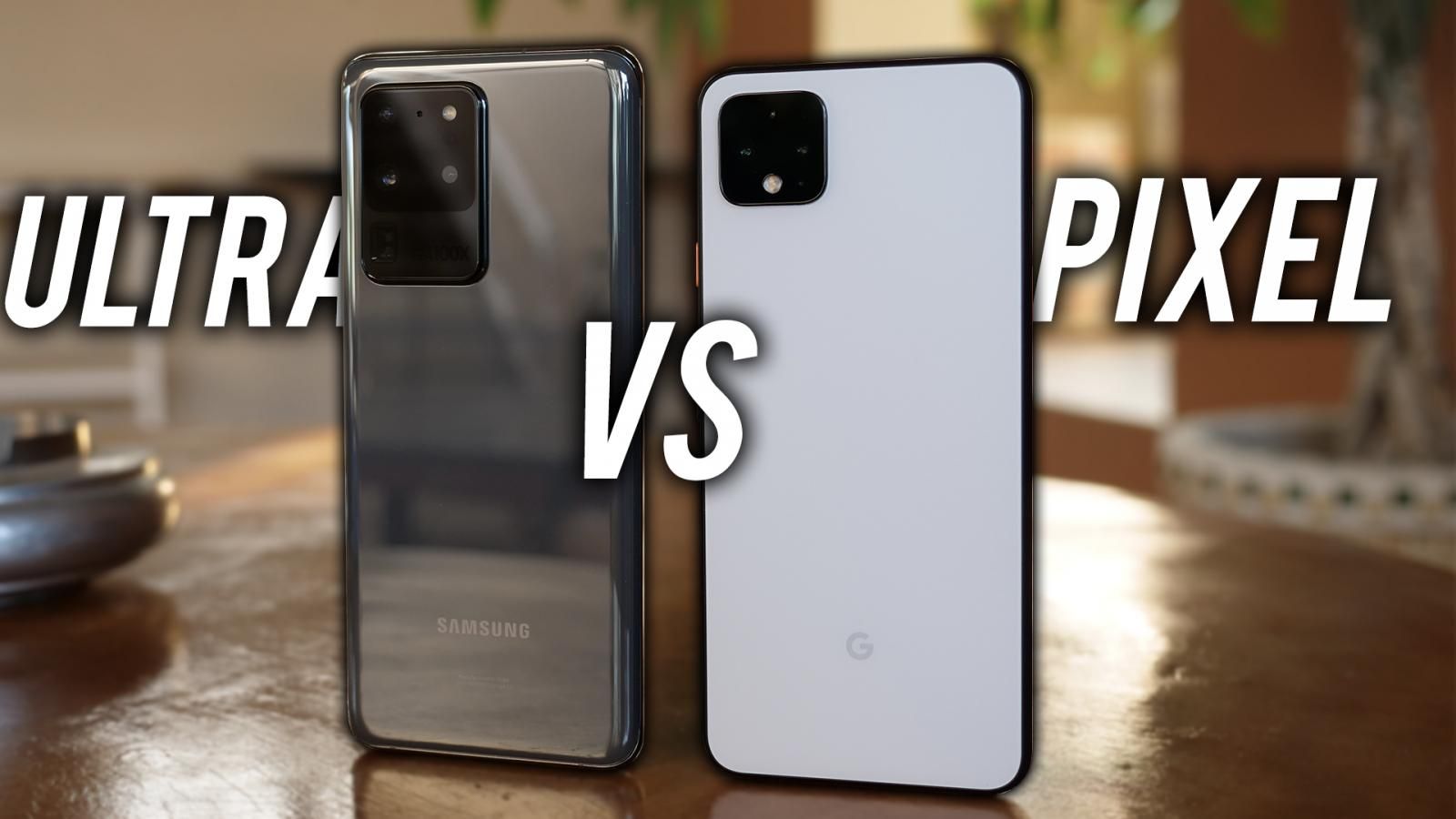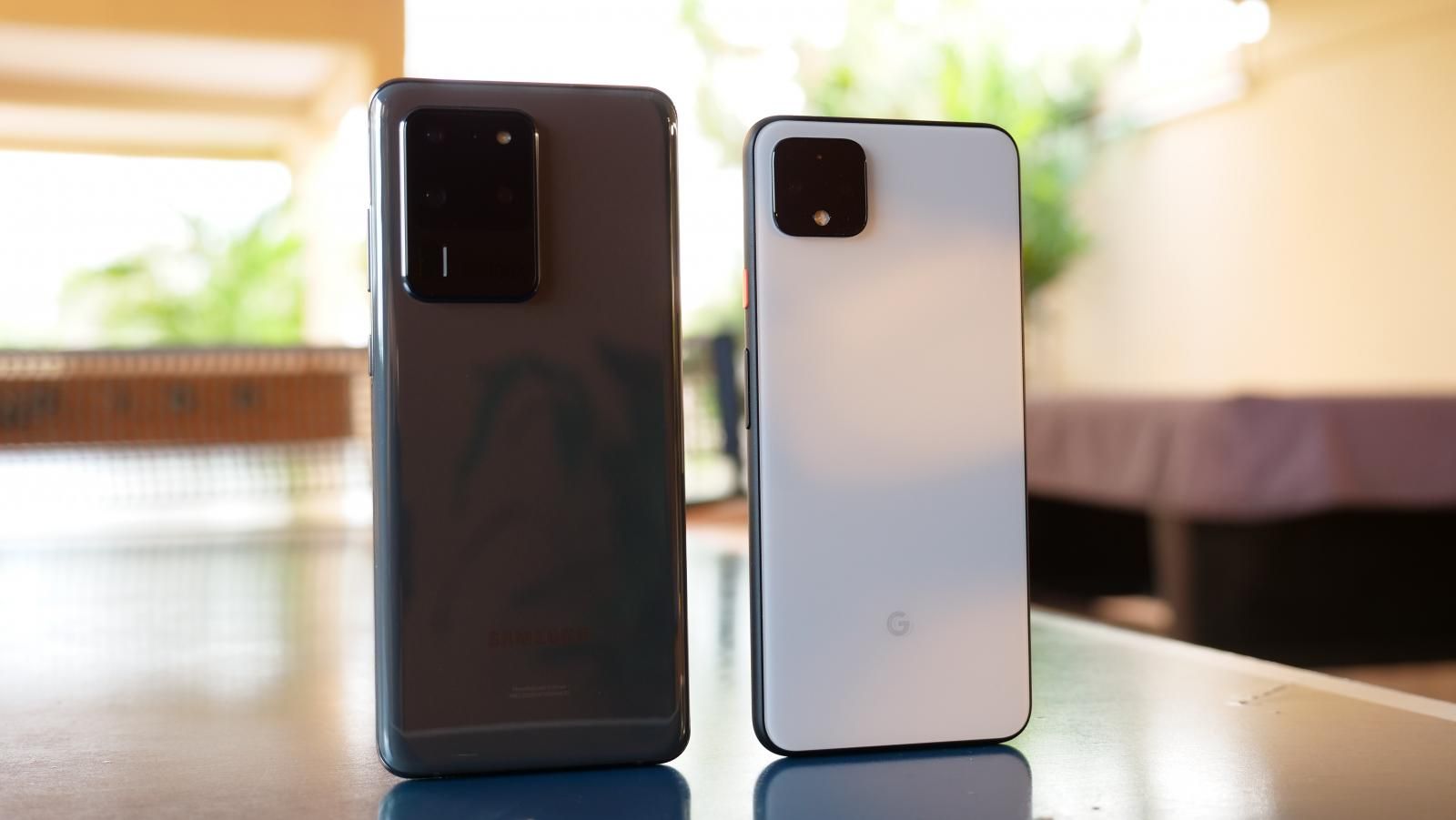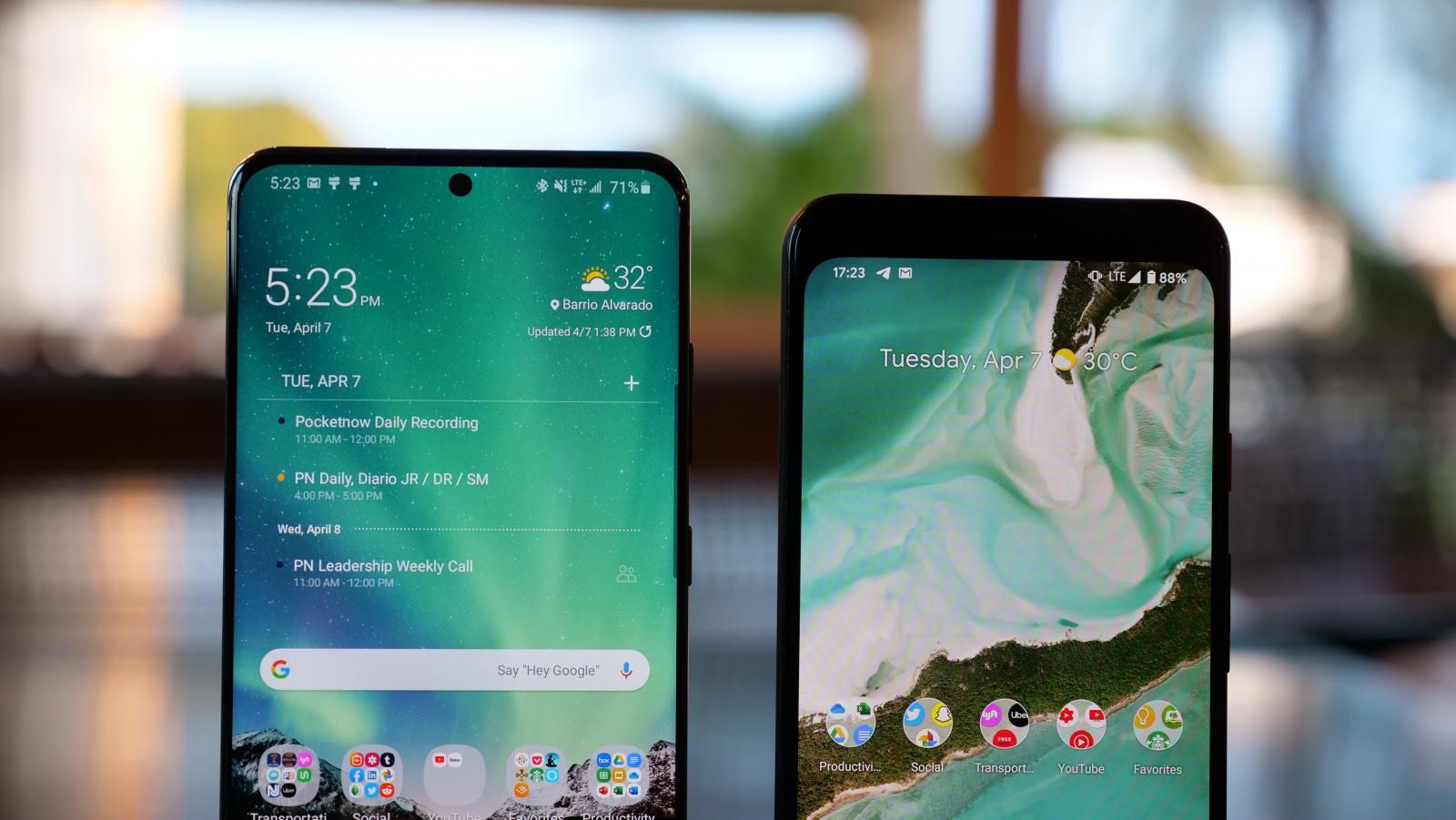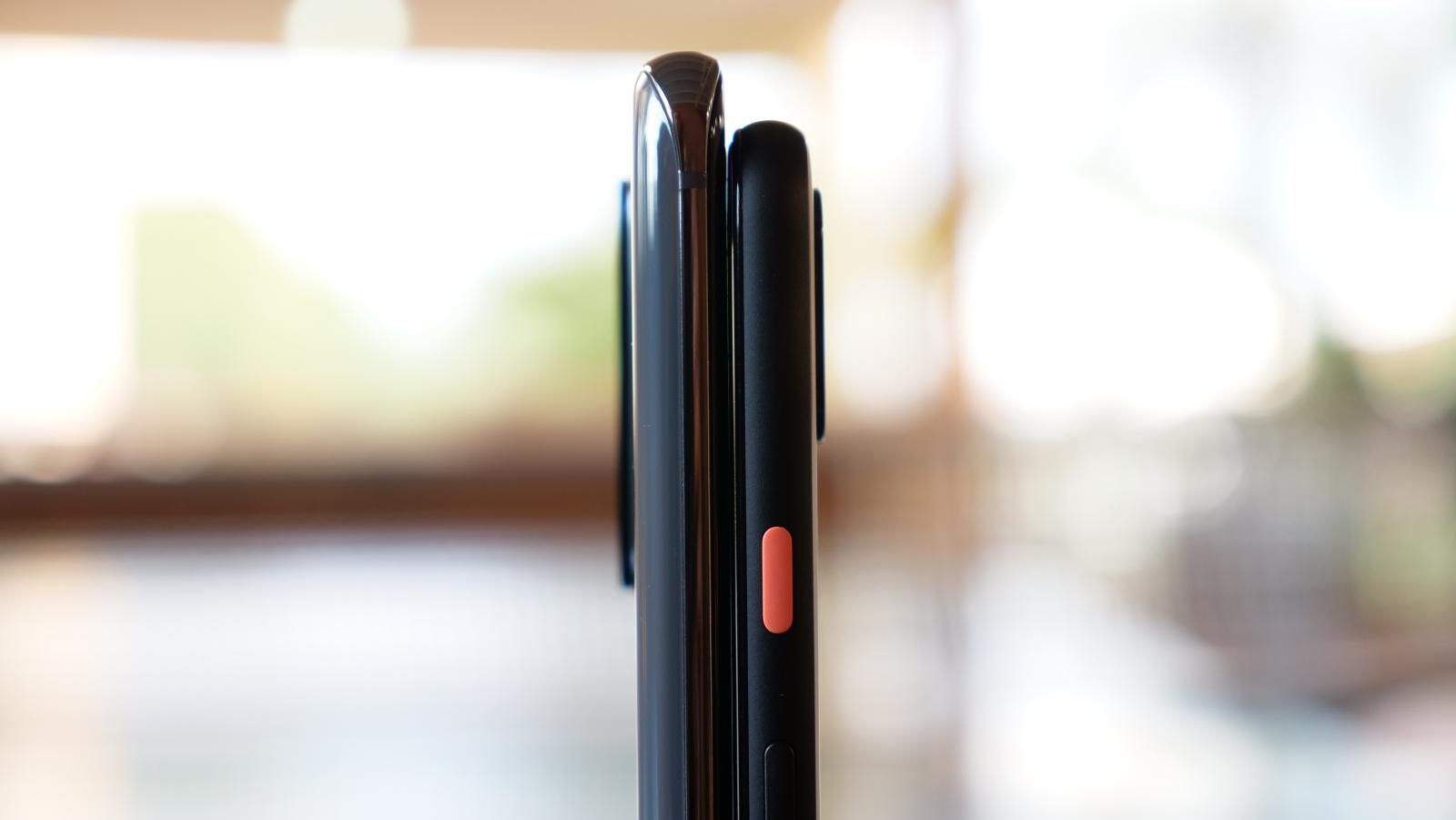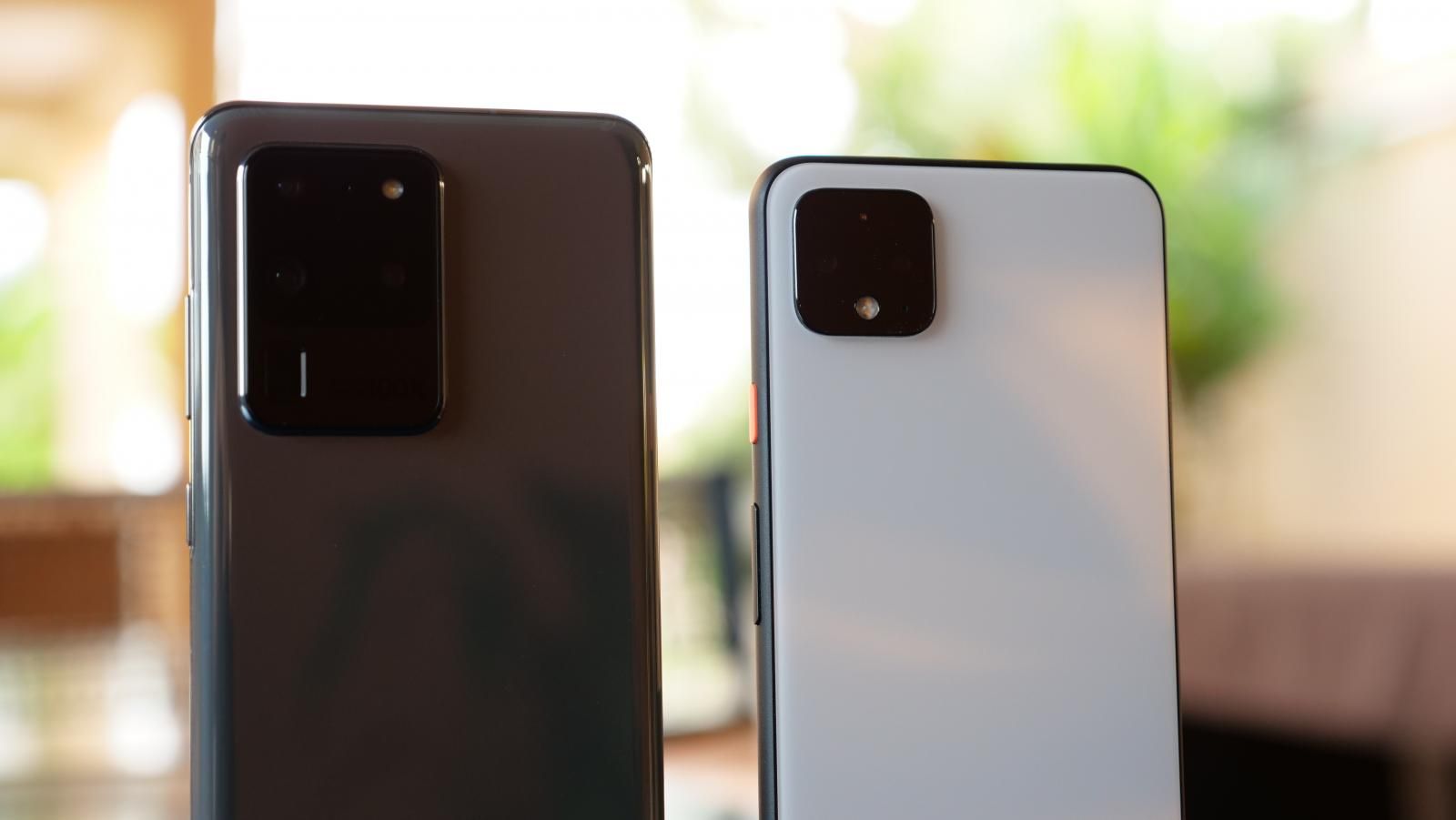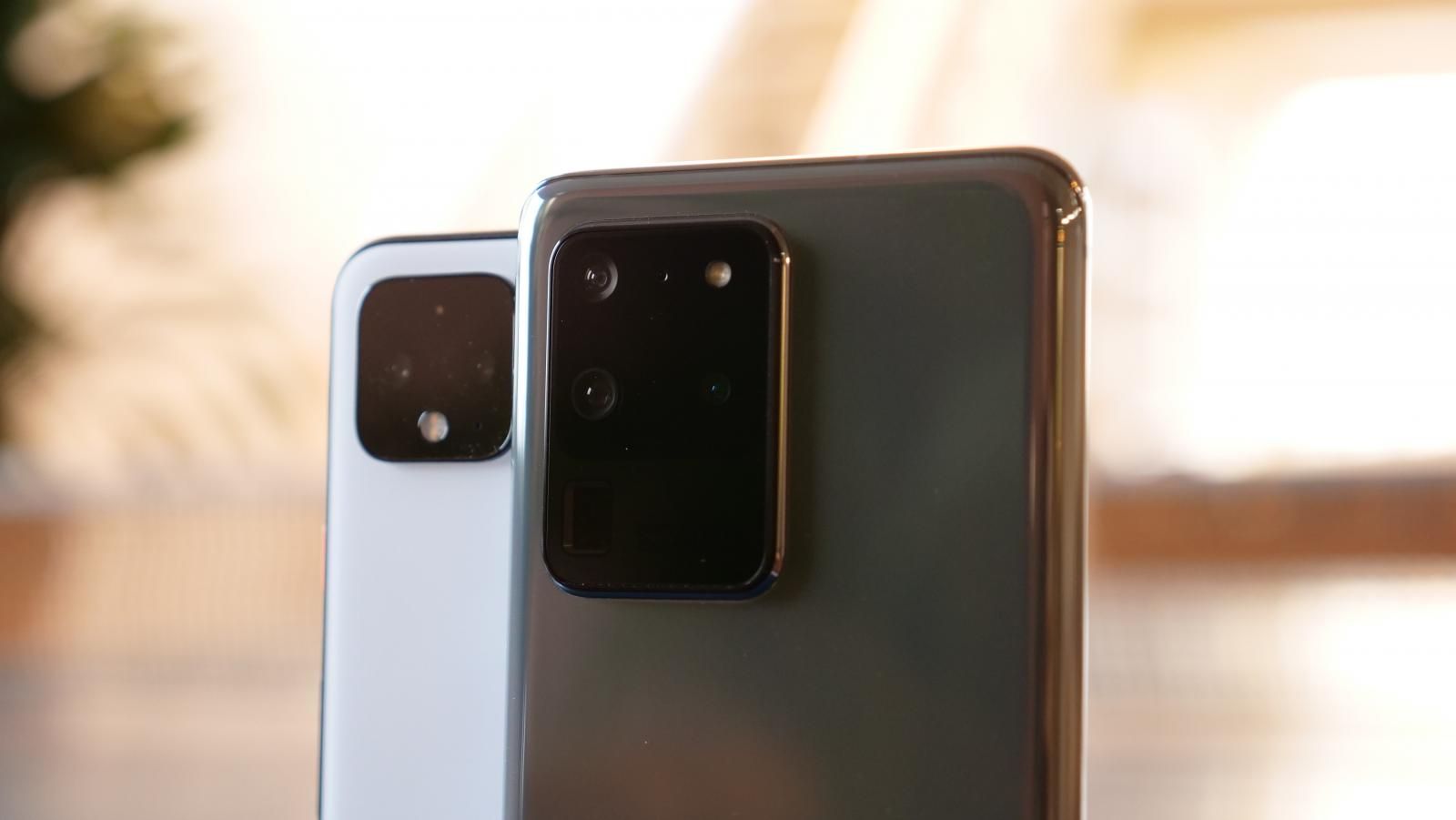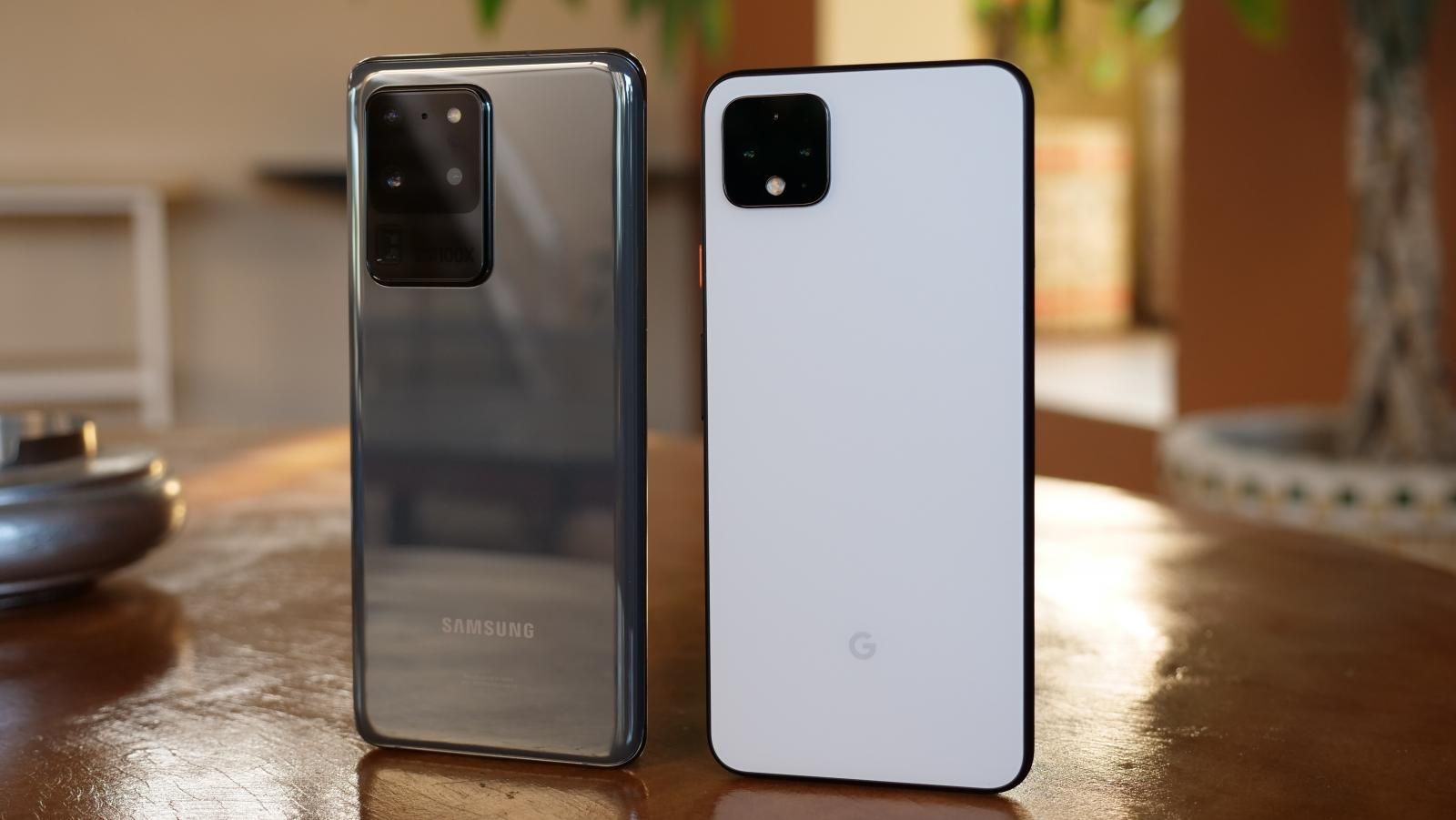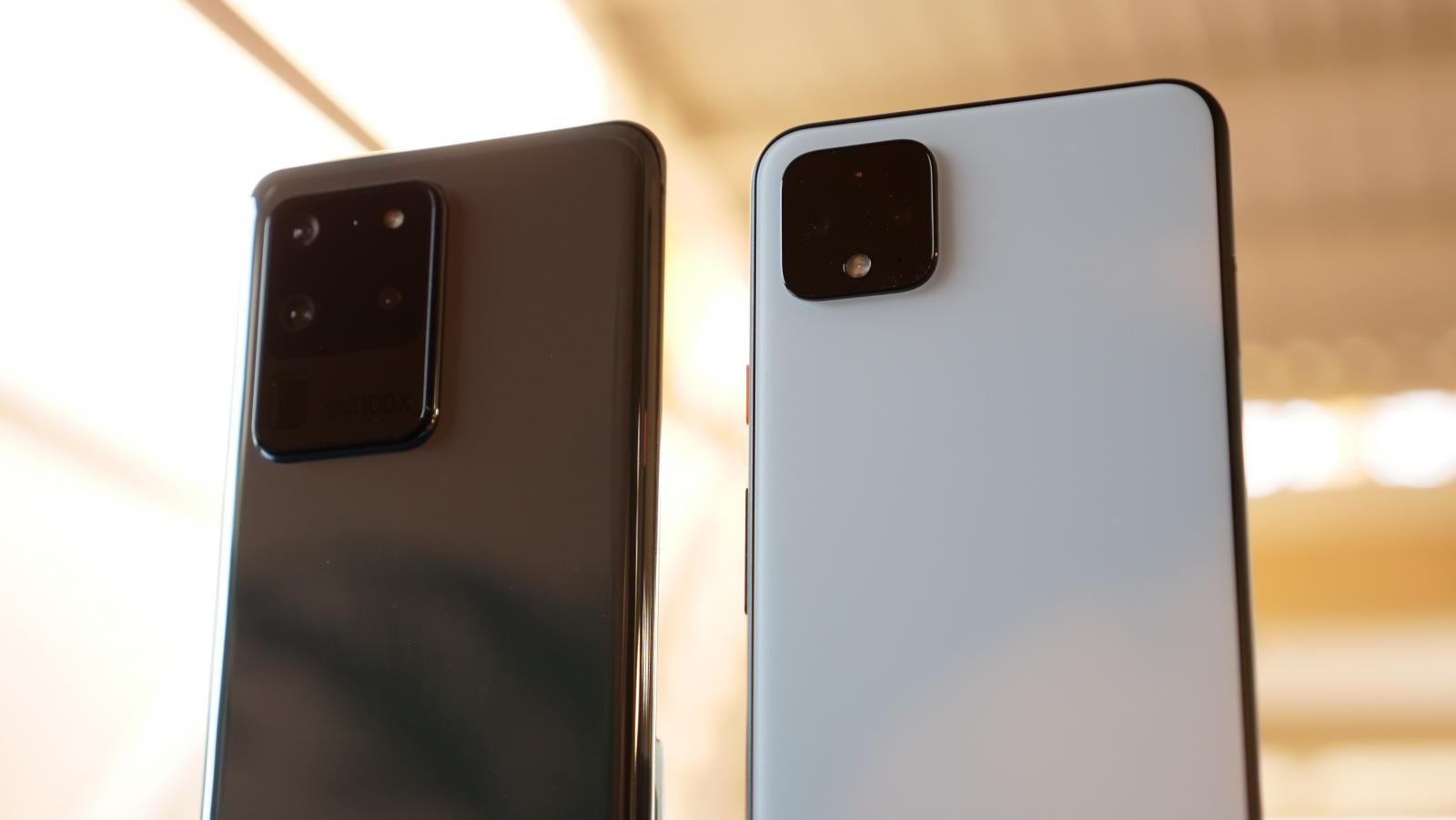Smartphone cameras have taken dramatic leaps over the last decade. Lenses have multiplied, features keep expanding, heck 2020 has even brought us phones that can film at a higher resolution than the camera I use for this video.
But, capability isn’t everything. There are lots of technical reasons why we still prefer to use a regular camera for a video, regardless of what phones can do. So think about it. Today we have Ultra smartphones, with periscopic zoom lenses, and megapixel counts that exceed the hundreds, and of course, a price tag to match the numbers, and yet how much does that really matter? What if there was another phone that didn’t bring that price, nor all those numbers, and was still able to achieve that same premise?
This is the Galaxy S20 Ultra, the smartphone that Samsung claims is bold enough to change photography, and this is the Pixel 4 XL, what is simply known as “The Google Phone,” but which we know is the successor to the brand that actually did change photography, but with a completely different approach.
So, $1399 for the Galaxy, $899 for the Pixel, and sure I know you can find some good deals on both already, but the price difference remains relative, meaning you can buy a Pixel 3a for that amount in between. So which one is better?
These two companies have been in charge of a few milestones over the last couple of years. In my opinion, the Galaxy S6 was the first Android phone to take photography seriously, and the first two generations of Pixel took the crown for the best photos of their time. The approaches were dramatically different though, and remain the same even for this comparison. Samsung believes the capability of hardware, while Google has always provided more with less, through computational photography.
And sure, having both these phones be 6 months apart could make this comparison unfair, but that’s precisely the reason why this comparison is so important. Think about it: For years Google has been king of photography and the best Android experience, all while making specs secondary. So, can Samsung beat a Pixel with muscle?
Hardware
From a design perspective, this is a tough one. It’s like if each phone went into this weird competition over the crown of polarizing design. The Pixel was the least appealing phone of 2019 for me, but the back of the Galaxy makes me think twice. The Pixel color options make it more effective at fingerprint suppression, and the play of black and orange accents make it a bit more hip. Samsung sadly picked the most dull and smudge-friendly colors it could find, and then slapped it with a camera hump that only a mother could love. It makes you want to strap the Galaxy on a case just to balance it, even if it’s technically more durable than the pixel with Gorilla Glass 6 vs 5. Also that powder coating on the Pixel’s aluminum band might look cool in matte, but I doubt it’ll do a better job than the Galaxy’s polished aluminum in a fall.
Size and heft are also things I prefer from the Pixel. Samsung seriously built a tank that could handle all the hardware. It’s 6mm taller, 1mm wider, about a mm thicker and almost 30 grams heavier. Everything about the Galaxy just screams massive. Even weight distribution can be a chore vs the Pixel. It has to be, I mean, look at the spec sheet:
6 months of a difference mean the Galaxy is two generations ahead in the processor department, has double the RAM, starts at double the storage, which is also faster. It supports expandability while the Pixel doesn’t, has newer Wi-Fi, 25% more battery, double the charging speeds both wired and wireless, offers fast wireless power share, and then it’s like Finish Him in Mortal Combat by supporting every flavor of 5G known to man. The Ultra takes on its name well at being the extreme of everything modern hardware can offer, while the Pixel was even lagging behind certain 2019 models, and the trend continues when looked from the front.
On a phone, the display is most of the story, and this is where Samsung, again, is king. Its panel is 10% larger, though you have to keep the taller aspect ratio in mind, and still it offers 15% more surface area, and its more futuristic approach to removing bezels gives it nearly 10% more screen to body ratio. Both are capable of Quad-HD+ resolution, but Samsung’s Dynamic AMOLED is also more advanced than Google’s P-OLED, given its added brightness, additional blue color reduction, and HDR10+ support. At Full HD it can also go up to 120 Hz, which I find more noticeable that Google’s variable 90 Hz at Quad HD. About the only thing I prefer on the Pixel is its more useful and dynamic Always-On display. And if content consumption is your thing, I’d say I prefer the more symmetrical display on the Galaxy,
The Galaxy’s Infinity-O approach looks like something for 2020, while the Pixel’s top hood more like a play from 5 years ago. Google’s addition of radar and other more-secure facial recognition tricks has its benefits at a time when Face-ID is more ubiquitous. It’s now updated to only work if your eyes are open, and I love how notifications are only shown if your face is detected. Its major problem: Well you still can’t use it as a supported biometric for bank applications 6 months later. The Galaxy has facial recognition, but it’s not what I’d call secure, but you also get the option for a more traditional and secure ultrasonic fingerprint scanner under the display, which banks do support. If only it would also hide notifications in the process.
Software & Experience
Let’s keep talking more about software. I’ve been an eternal advocate for Samsung’s way of doing things vs stock Android, but this comparison is going to be an exception. See, I’ve been delaying this comparison for weeks because I’m still waiting for a camera update that I still don’t have, and I’m not gonna keep waiting to get my job done over how bad Samsung is at supporting all of its customers, because some people already have it. Google by contrast has already pushed two major feature updates to this Pixel 4 XL.
Now, for anything other than updates, I do prefer having a phone that does more. I depend on Samsung’s secure folder on a daily basis to separate my company accounts. I use the edge menus for App Pairs repeatedly to take advantage of the larger canvas. I like how Game Launcher tunes all this hardware to run at its best as I play. The extra RAM also allows you to keep apps running permanently. These are all things that are genuinely useful.
The Pixel by contrast is as barebones as it gets, and sometimes people just need a phone that’s simple and practical. I’ll take the Google Assistant any day over Bixby, and its squeeze to launch feature is just as useful as having the entire Google Feed when you swipe to the left. Stupid little things like having the lock screen detect the song that’s playing in the background are genius, but I’ll admit I’m disappointed at Google for removing perks like unlimited storage of photos at full quality, on a phone with such limited capacity.
The reason why updates matter is because the Pixel didn’t start off as having good battery life and that has changed. Google has managed to take this from being an ok phone, to one I’d rely on to last the full day on a charge. The Galaxy, well, is as Ultra as it gets. This may not be a 2 day phone, but you’ll have enough juice to start the next day just fine.
Now, even if the Pixel has a more exposed earpiece, the audio quality on both devices is just as great, and listeners claimed that the audio was just as crisp on their end, regardless of which device I used. An interesting twist is that I decided to test a new carrier service after a tip I received from Michael Fisher, and which later became today’s sponsor, Visible.
Camera
So far, the Galaxy owns hardware, the software is a tie, and the tie breaker lies on the stove each device has on the top left corner. Is the Galaxy really capable of changing photography with all this hardware, when Google has been beating everyone with its software.
I mean, both companies have been doing computational photography, but Google has been doing it for longer. When you look at the spec sheet of this Galaxy, it’s really hard to believe that Google has enough prowess to beat physics with lines of code, but I’ll the results speak for themselves.
The Galaxy behaves more like a real camera, which has its pros and cons, as it brings along the added complexity that makes the smartphone auto-mode approach more enticing to consumers, and which the Pixel owns best.
As for Pros, well, the Galaxy starts winning because it simply has more cameras, much larger sensors and more megapixels on each focal length vs the Pixel. You have the advantage of a more-epic ultra-wide the Pixel lacks, though photos are toe to toe on the standard camera during the day. But then once you start zooming into subjects, it doesn’t matter how much software Google brings, you can’t beat physics, the Galaxy provides usable photos up to 10X, while the Pixel is already soft at its max, which is 8X.
This is more noticeable in low light where the Galaxy brings its night mode to all focal lengths, just like the pixel. The Ultrawide pulls in some decent light, and then both phones once again go at it with the standard sensors, but once you start zooming in to subjects, the Pixel starts falling apart while the Galaxy keeps fighting grain and bringing in more detail, though it’s worth noting the Galaxy does some pretty long exposures, some times of up to 20 seconds, while the Pixel doesn’t take that long.
The cons are in the inherit issues with large sensors, and which make me wonder why Samsung killed variable aperture. The natural bokeh can be cool, but the closer you get to a subject, the more out of focus that most of it is going to be, while the Pixel doesn’t struggle with this.
I thought I’d prefer portraits from the Pixel but I find them to be comparable, with similar dynamic range. What’s really more surprising to me are selfies, once again, because there’s just so much data being pulled in by the Galaxy. Skin tones seem more natural, portraits more balanced and better separated, but then what’s most shocking is night selfies. Both phones support night mode, and yet the Galaxy beats the pants off the pixel in detail, color balance, and dynamic range.
Now, a department where I thought the Galaxy would win was video, and it does, but mainly because of capabilities and not execution. The Ultra is capable of 8K video, which I don’t show cause the Pixel can’t match it, but if 4K is any indication, that software update can’t come soon enough. The Pixel does a slight better job in stabilization, and then owns autofocus, with the Galaxy remaining locked for no reason what’s so ever.
What I like most about Samsung is the ability to switch focal lengths. The ability to record 4K at 60 vs 4K at 30, and how it allows you to switch between cameras while recording. And yes, you do get 4K at 60 from the front-facing camera, along with some good dynamic range and stabilization, while the pixel is still stuck at 1080p at 30fps.
Conclusion
To conclude I have to say comparisons keep getting harder and more interesting lately. Companies have been working hard in blurring the lines between of competition, and in offering some ingeniousing solutions to what consumers want. Samsung doesn’t have Google’s software expertise, but they know hardware better than anyone, and there’s always a point where computational solutions can only do so much when they face real physics.
In that sense, we have a Galaxy S20 Ultra that owns hardware, there’s a tie in software, and then the camera experience is mostly owned by the Galaxy even before the software update we’re waiting for. It is a mixed bag in a few items that are claimed to be addressed, but which we’ll have to circle back to confirm. I mean the Pixel is no slouch, but this is one of those cases where software, again, just can’t beat physics.
If we were to add these points up, the Samsung Galaxy S20 Ultra wins. It’s the more future-proof phone given its 5G capabilities, and if and when the company does its part with timely software updates, it might just be that it beats the Pixel in more things over time.
If it were my money, I’d pick the more powerful and complete phone, but I think this comparison has also served to show how Google can give hardware such a tough battle on the code bench. If you were to choose the Pixel, I don’t think you’re getting any compromise. You’re getting an experience that’s almost as good, and with money to spare for that smartwatch or tablet you always wanted.

